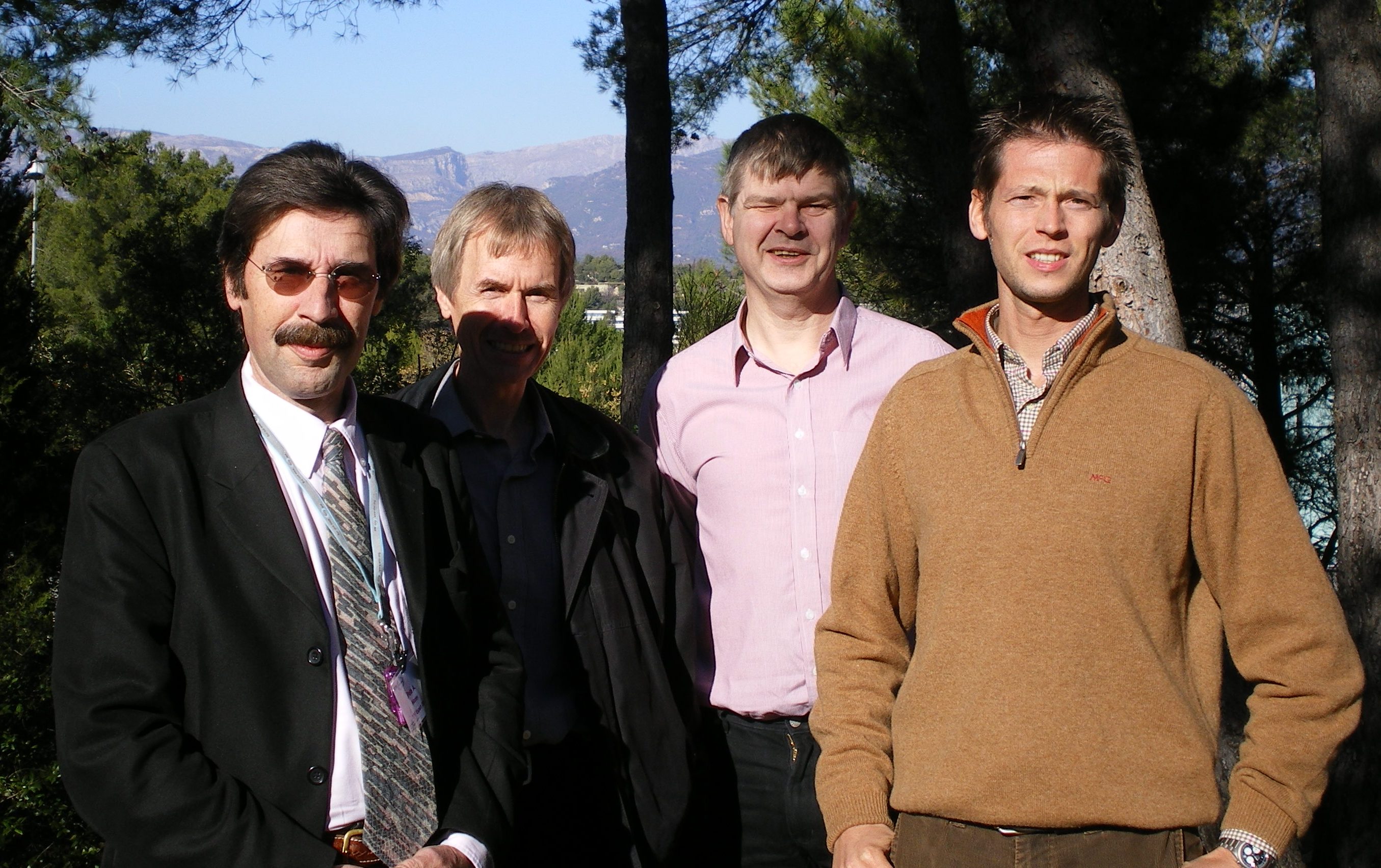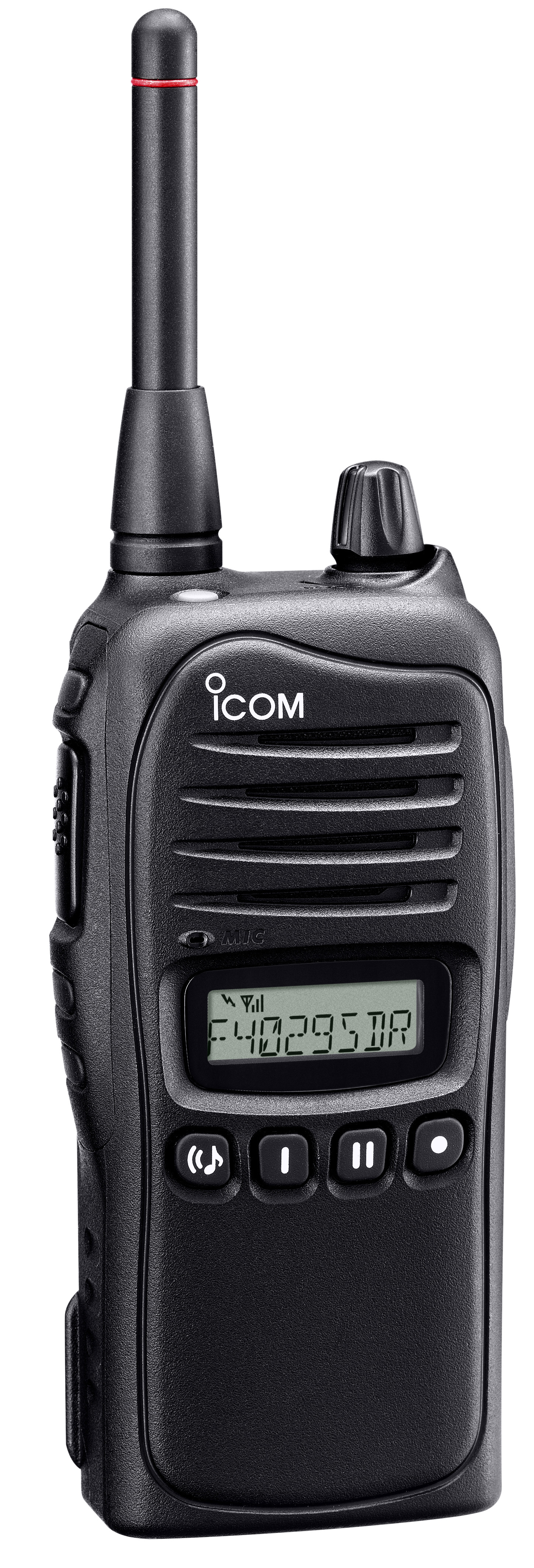Specialist Task Force 340:
Test Specifications for the
Interoperability of Peer-to-Peer Digital Private Mobile Radio Devices - Phase 2
Who we are:
Team Members: Pete A. Hizzey
Finn Kristoffersen
Johan Petersen
Sebastian Müller (STF leader)

What we do:
The scope of the work is the completion of dPMR protocol
test specifications, composed of:
Conformance Test Specifications:
 Protocol Implementation Conformance Statement,
Protocol Implementation Conformance Statement,
 Requirements catalogue,
Requirements catalogue,
 Test Suite Structure and Test Purposes
Test Suite Structure and Test Purposes
 conformance TTCN-3 ATS
conformance TTCN-3 ATS
Interoperability Test Specifications:
 Test Suite Structure and Test Purposes
Test Suite Structure and Test Purposes
 Test descriptions
Test descriptions
Some background on dPMR and PMR:
dPMR, the 6,25 kHz
narrowband solution.
There has been interest
in finding a solution to the shortage of radio channels in many parts of the
world for some time. Considerable discussion has revolved around the idea of ‘2
channels in a 12,5 kHz bandwidth’ and how and when it could be implemented.
It was several years ago
during a meeting of the European Telecommunications Standards Institute (ETSI)
that a representative of one of the major radio manufacturers stated that TDMA
in a 12,5 kHz was the only way forwards because an FDMA solution in a
6,25 kHz channel was a technical impossibility.
A short while later, one
of the ETSI member companies, Icom Inc., presented some working prototypes of
6,25 kHz FDMA radios. They also explained about the development of a narrowband
4FSK modulation scheme that would comply with the FCC emission mask that was
mandated in the FCC requirement for Land Mobile Radios to have 6,25 kHz
capability originally by 1st January, 2005 (Subsequently extended to
2011). This also fitted with the equivalent requirement in European radio
standards. It became clear quite early on that this 4FSK technique combined with
the latest half rate digital voice CODECs offered a workable solution and the
proposal was made to ETSI to develop a European standard for digital Private
Mobile Radio for 6,25 kHz channels. This work was undertaken within the ETSI
Digital Mobile Radio (TG-DMR) committee and the resulting European standard,
TS102 490 was published in 2006.
dPMR
and DMR
Both of these digital
radio protocols have been published as European standards, DMR being the TDMA (2
timeslot) system with 12,5 kHz channels and dPMR being the FDMA system with 6,25
kHz channels.
Both systems are equal in
that the capacity of the 6,25 kHz FDMA system is identical to that of a TDMA
timeslot in 12,5 kHz. Also, both dPMR and DMR are currently employing the same
voice CODEC (AMBE+2TM
from Digital Voice Systems Incorporated) so the voice quality is effectively
identical too.
However, one of the
reasons for electing an FDMA solution was that TDMA is most efficient when
operated under a controlling infrastructure of base station repeaters. FDMA on
the other hand is preferable when the operation is mostly peer to peer or direct
mode. Given that a significant percentage of business and industry users operate
small radio systems that do not require any infrastructure, FDMA provides the
most cost effective answer.
In both cases, FDMA and
TDMA come close the ideal of doubling the available radio channels.
dPMR
in use
The most noticeable
feature of dPMR is the performance at extreme range when compared to analogue
FM. The 4FSK scheme results in a sensitivity that is largely superior to
analogue and the digital demodulation and error correction gives excellent audio
quality in the fringes of coverage.
When this is combined
with the possibility to have voice, data, and text or combined voice + data
calls, the dPMR radio becomes a far more polyvalent tool than its analogue
predecessor.
The first dPMR radios
compatible with the TS102 490 standard have been available since early 2006 in
Icom’s IC-F4029SDR. This a handheld radio specifically targeted at the
licence-free digital PMR bands (446.1 MHz~446.2MHz) in Europe. These bands offer
the possibility of an FRS type of service but with digital radios.
It should also be noted
that these dPMR radios are dual-mode. Due to the choice of an FDMA architecture
it is simple to provide both analogue and digital operation, and the same radio
can offer 6,25 kHz digital operation and 12,5 kHz analogue operation which can
be an essential requirement for users that are looking for a progressive
transition from analogue to digital. As mentioned, TS102 490 is an open ETSI
standard, and as more member countries open up the band for dPMR446 use, it is
expected that other manufacturers will release compatible products on the market.
dPMR
in the future
The success of the
initial dPMR products combined with the support from a broad range of radio
industry players has meant that ETSI has now decided to expand on the TS102 490
standard and develop an enhanced version of the protocol with significantly
greater functionality and this new standard is expected to be completed later
this year.
Pete Hizzey
ETSI Rapporteur for TS102 490
That’s how the dPMR Handset looks like:

Time plan for the work:
The STF will produce the deliverables according to the
following time scale:
Work Item(s): All work items
- Start of the work October 2007
- First stable draft for WG review December 2007
- Stable draft for WG review February 2008
- Draft for WG approval end-February 2008
- Draft for TB approval March 2008
-
TB approval end March 2008
Work plan and Milestones:
Milestone A: end-December 2007 Progress Report
approved by ERM TGDMR by correspondence. The STF will also upload on the TG DMR
Server the draft DTS/ERM-TGDMR-268 (ATS including TTCN code) for ERM TGDMR
approval, the draft of other deliverables and the work plan and proposed
resources allocation for the continuation of the work in 2008.
Milestone A will require about half of the resources.
Milestone B: Final Report and all deliverables
required in the ToR approved by TGDMR and TC ERM for publication. The target is
that the work is completed and the final drafts are uploaded on the TG DMR
Server by end-February 2008. The target date will be confirmed in the planning
in Milestone A.
How to contact us:
Pete A. Hizzey: pete.hizzey@wanadoo.fr
Finn Kristoffersen: finn@cinderella.dk
Sebastian Müller: sebastian.mueller@etsi.org
Johan Petersen: johan.petersen@sleipnertech.com
Note: this information is based upon STF working assumptions.
The views expressed do not necessarily represent the position of ETSI in this
context.
Last updated: 2008-03-19 18:01:16